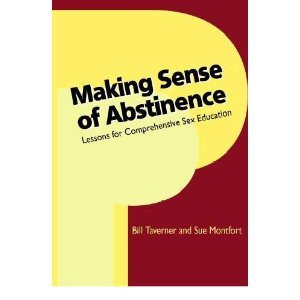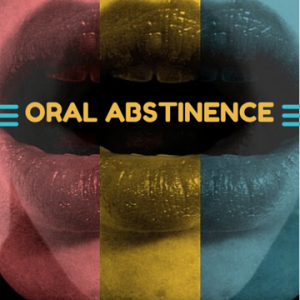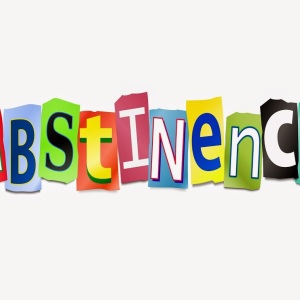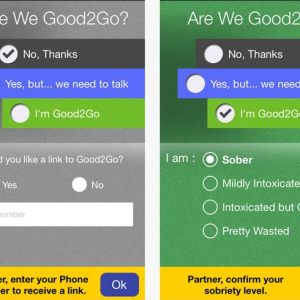One in 10 “abstinent” teens has a sexually transmitted infection. Yes, one in 10 teens that says he or she is abstinent has a sexually transmitted infection. This statistical anomaly comes from a news story reported in the Washington Times. It sounds strange, but it really shouldn’t be surprising to know that teens who say they are “abstaining” really aren’t. Prior research found that almost 90% of teens who make virginity pledges fail to keep them, and they are one-third less likely than their peers to use condoms at first intercourse, and are much more likely to engage in unprotected oral and anal sex, behaviors that they might feel “don’t count”. So I wasn’t very surprised to learn that “abstinent” teens are getting STIs. I was, however, surprised to read about it in the Washington Times. This newspaper is notorious for its conservative, anti-sex ed bias. Why would they report on a study that so clearly illustrates the problems with abstinence-only-until-marriage (AOUM) programs? The study demonstrates why you can’t tell kids to “Just say no!” without also having a serious discussion about the actual sexual behaviors that need to be avoided. So why was the Washington Times reporting on the negative impact of AOUM programs?
The next day, I got my answer. The report was a perfect set-up for the analysis that followed in Far Right news circles the next day, where the director of the National Abstinence Education Association used the study to blame Planned Parenthood for the way abstinence has been taught in America. Huh? Planned Parenthood has never received a dime of the billions of dollars funneled for abstinence-only education over the past fifteen years! Surely Planned Parenthood cannot be blamed for teens’ poor understanding of abstinence! The education Planned Parenthood provides is medically accurate. In fact, for years, Planned Parenthood has petitioned Congress to require medical accuracy in abstinence and sexuality education, while AOUM advocates have opposed such legislation!
2. Build skills for successful abstinence.
3. Discuss not only the behaviors a person decides to avoid, but also the behaviors that “abstinence” permits, whether that be masturbation, kissing, touching, etc.
4. Help teens protect themselves from the unwanted consequences of sexual activity if and when they change their decisions.
I know this model of sophisticated, meaningful abstinence education is despised by those who favor a simple, “Just say no!” approach. The Far Right article attacked the first key principle of our manual – that teens need to understand and apply the meaning of abstinence in their own lives. I will explain.
Making Sense of Abstinence acknowledges that the language of “sex” and “abstinence” is very confusing – not just among teens but also among public health professionals. Even among presidents! I often start off my workshops and keynotes by asking people to take out their cell phones and asking them to call or text three friends and ask them what the words “abstinence” and “sex” mean. I could fill up (and I have filled up) a wall of easel sheets with the varied and contradictory definitions about these words. The activity also reveals astounding differences in motivations for the decisions to abstain, or not to abstain. The manual seeks to help teens who make the choice to “abstain” understand what abstinence means to them, so that they can plan and communicate their decisions accordingly. Many of us might think that “abstinence” means no oral, anal, or vaginal intercourse. But what we think is irrelevant to the teen who is convinced that they don’t have “real” sex – they just have oral sex. I could stand on my head trying to convince them that oral sex does indeed “count” and must be avoided. But if they are determined not to abstain from this particular behavior, despite Mr. Taverner’s opinion, then some protective knowledge is needed.
It’s Orwellian doublespeak to claim that Planned Parenthood – or Making Sense of Abstinence – is convoluting the meaning of abstinence, when both are actually seeking to help teens clarify the meaning for themselves. Fifteen years of federal funding for programs that “Just say no!” without further clarity have produced a generation of young people that is in the dark, thinking that they are abstaining by finding the loopholes to their abstinence preacher’s admonitions.
The above referenced article also includes the completely false statement that new federal teen pregnancy prevention money is supporting the teaching of Making Sense of Abstinence. Oh, I wish it were true. We could surely use the money in these tough times when our governor has stripped my local Planned Parenthood affiliate of $1.2 million in family planning funds. And nothing would please me more than to see our sex-positive philosophy implemented in the nation’s classrooms. But the notion is a bald-faced lie. It is true that some of the new federal funding is supporting the implementation of teen pregnancy prevention programs administered by other Planned Parenthood affiliates. Unlike the requirements for AOUM programs, these programs must utilize teen pregnancy prevention programs that have been rigorously evaluated for success. None of them include Making Sense of Abstinence, which is relatively new on the scene, and has certainly not been subjected to that level of evaluation.
Clearly there are different philosophies on teaching about abstinence, and a need to carve some middle ground. Sue Montfort and I tried to do this. We recognized that some agencies will never allow our lessons on masturbation and outercourse to be taught, nor the lesson called “Some Day,” which helps for future planning after one’s abstinence decision changes, as it almost always does, whether it’s after a walk to the altar or in college, or this weekend. But there are plenty of lessons that find common ground and could be used without hesitation or regret by AOUM advocates. Take the lesson on talking with one’s parents and learning their values about abstinence. Or several lessons focused on developing the planning and communication skills needed for successful abstinence. Students learn the difference between passive, aggressive, and assertive communication so that they can stand up for their decisions. Students learn strategies to support their abstinence decisions in the heat of sexual arousal. Some might disapprove of the lesson titles (e.g., “Handling Horny”) but these are lessons that benefit all students, regardless of the ideologies of the teachers.
If we are to continue to seek middle ground, there must be an honest exchange of intellectual ideas. And that means that the lies need to stop.







Great post.
It seems to me we often put “sex” on one side, and “abstinence” on the other, creating the confusing climate you describe, as well as over-emphasis on both! This can’t possibly be helpful for teenagers already dealing with growing up!
My mom works for Planned Parenthood as a nurse practitioner. She has never advocated sex or abstinence, only EDUCATION and PERSONAL CHOICE. That can mean having sex, or not – but it’s up to you.
Thank you!
Bravo.